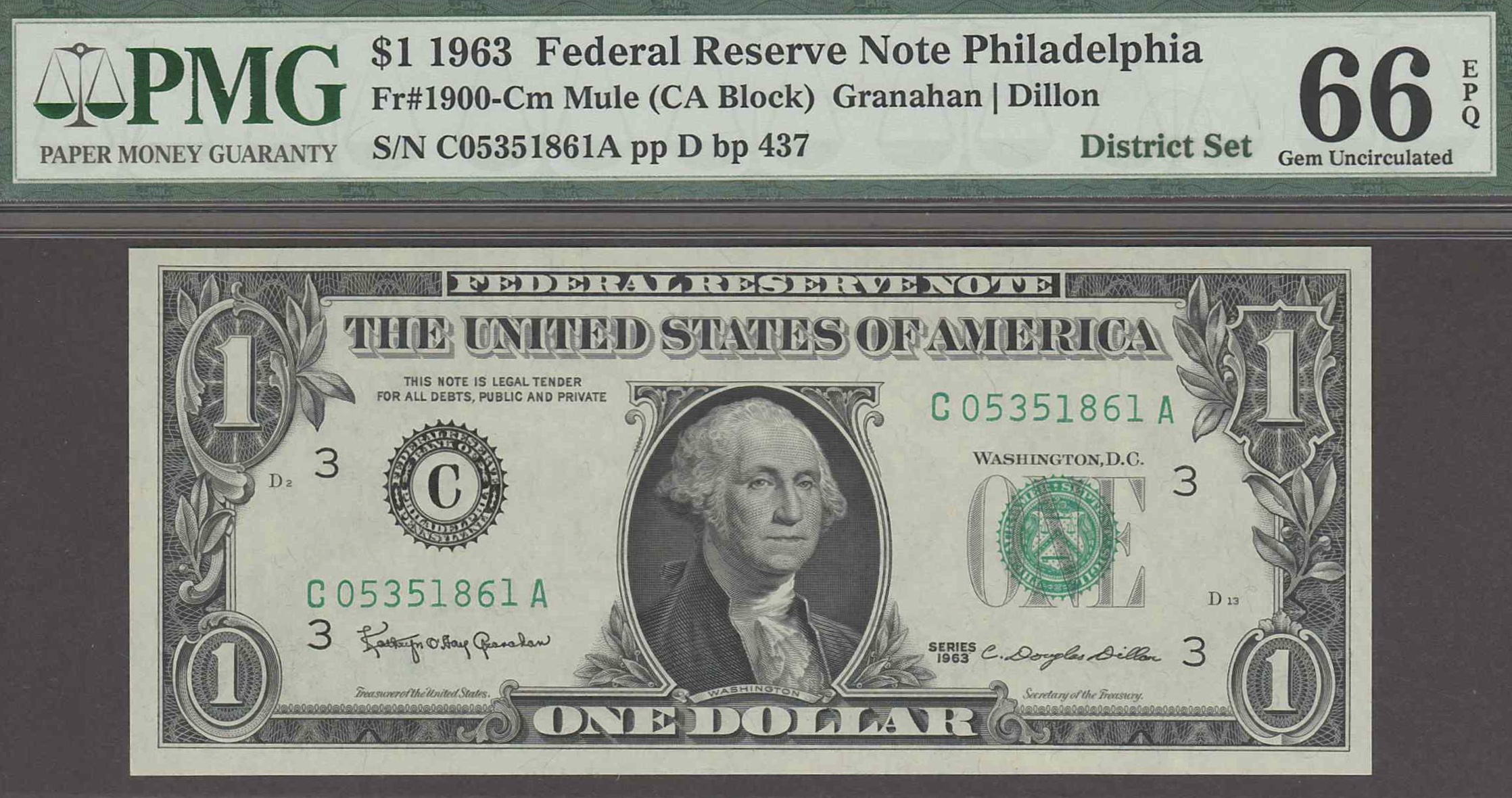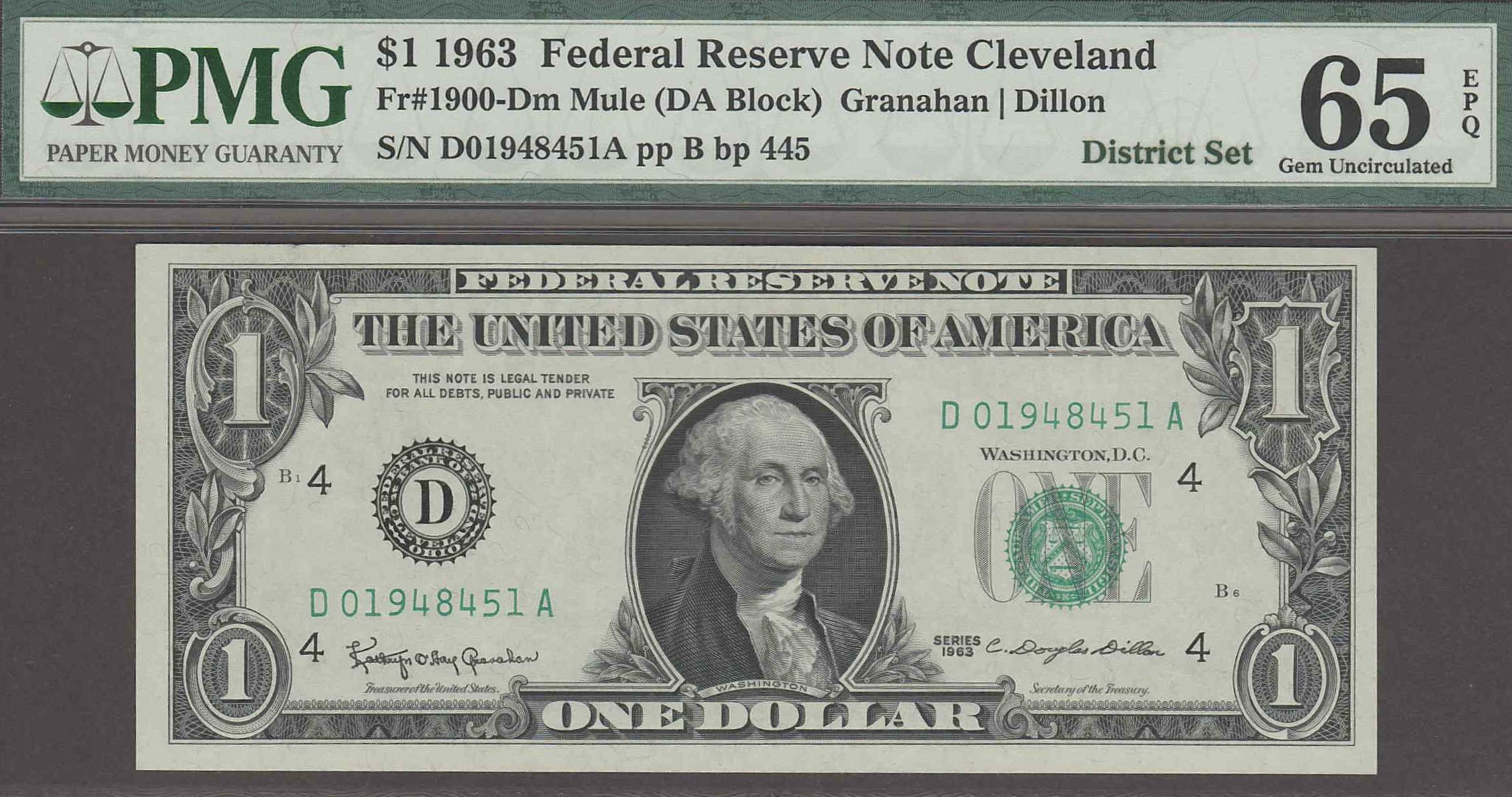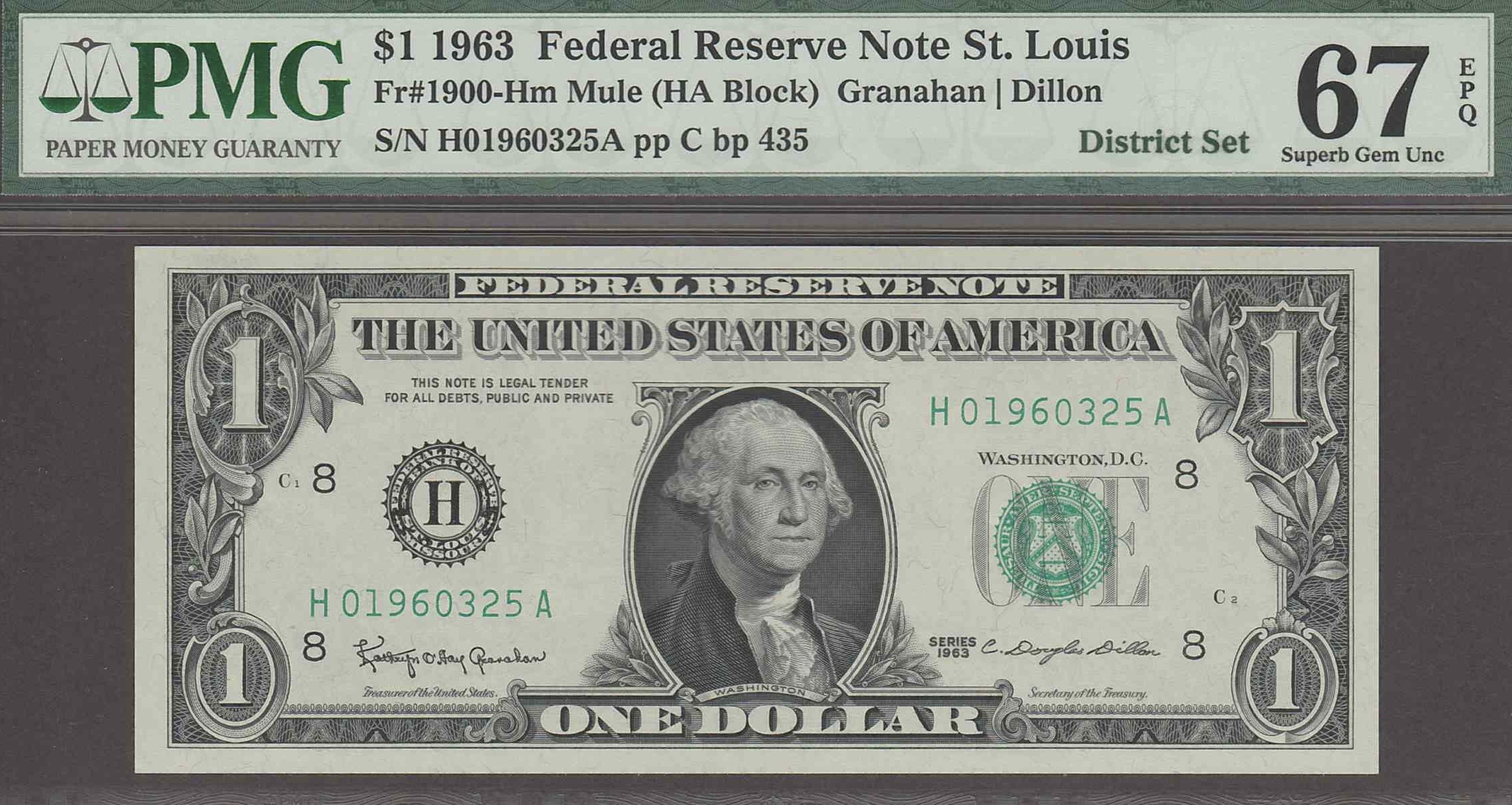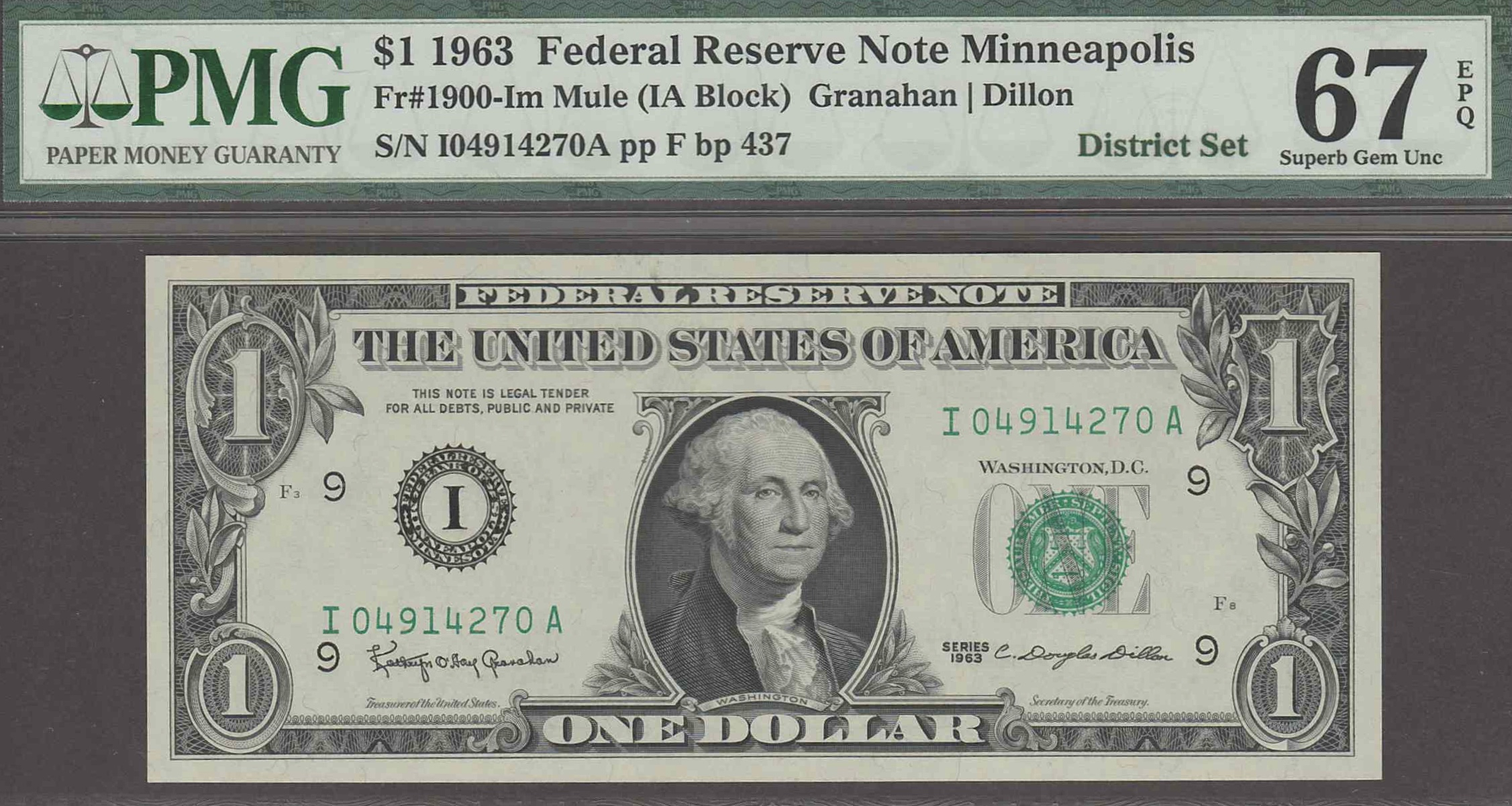1963 $1 FRN District Set
 Steve_in_Tampa
Posts: 2,032 ✭✭✭✭✭
Steve_in_Tampa
Posts: 2,032 ✭✭✭✭✭
Your basic 12 note District Set. Twelve notes representing all of the Federal Reserve Banks that help distribute our paper currency. This particular set includes nine Mules, which is not unusual for this series. Small-size Federal Reserve notes made their first appearance in 1928 but oddly did not include the $1 denomination. It would be another 35 years before they joined the party.
These $1 FRNs were printed alongside $1 Silver Certificates which helps explain all of the Mules. The back design is identical to $1 SCs and the face is very similar, with a district seal added to the left side of the portrait. Federal Reserve notes also have a different serial numbering system compared to Silver Certificates. Most notable is a prefix letter designating the district represented, A through L, and replacement notes now use a star (*) after the serial number instead of preceding the serial number. Sets like these have been sold as complete sets for at least 50 years, with some sets still available with matching end numbers, which is/was a popular way to collect sets. A District set is different than a Block set. A District set includes one note from each district printed for a series and a Block set includes a note for each block issued for series. A 1963 $1 FRN block set would include 22 notes and 12 more if you include the replacement notes. Many a new collector started with these. Affordable and easily assembled for under $100.
On a personal note, these modern FRNs is where I started and I still love to collect them. You’ll find you have a better chance of assembling a well centered set if you hunt individual notes. Buying a preassembled raw set may save you some money, but you lose some control of the quality. All of these were printed on 32-note sheets in Washington DC. The notation on the PMG holder “District Set” is a nice touch and can be added by request at the time of submission.












Comments
Very nice Steve. I was introduced to FRN collecting by a long time friend in the 60s. He belonged to a collecting group (long time before the internet). The group required that you get a pack of new bills and publish your name/address. The deal was as follows. A club member would send you a bill from their district with a SASE. You would return to them a note from your district. Many members collected certain serial # endings and would request them from you. As time went on, you ended up accumulating many sets...and if you didn't want to tie up the money, you spent them....still have my 63 set.
Great set of notes!
My YouTube Channel
I notice a lot of Mules. Do you specifically collect them?
I remember those District sets being heavily promoted back in 1963.
No. I bought these already graded in a set.
Series 1963 $1 FRNs were printed alongside 1957B $1 Silver Certificate, so this series $1 FRNs have more than their fair share of Mules. They’re considered common for this series.
This is a good lesson in the $1FRN. Thanks a lot. I needed that.
TomX4,
I seem to remember that in the early days notes were actually distributed on a regional basis by the Federal Reserve Bank serving that region. For example, someone living in the Cleveland area would find D-4 Cleveland notes but not L-12 San Francisco's. Now I think there is no real relation between the Fed District and the notes they receive for distribution. Is that accurate? If so, when did the change occur?
I'm not sure....we did it long before the internet ...basically to get one from each district...prefix/suffix meant very little at the time.